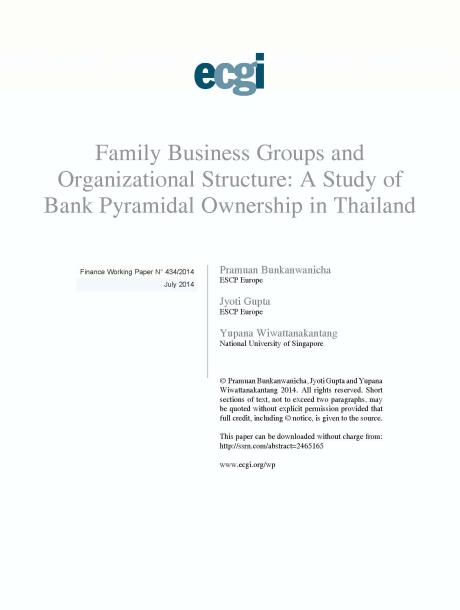
Finance Series
Family Business Groups and Organizational Structure: A Study of Bank Pyramidal Ownership in Thailand
Abstract
This paper investigates how banks and finance companies operate in a family business
group. Using uniquely detailed ownership data from Thailand, we find that the controlling
families extensively use pyramids to control banks and finance companies and assign
different lending strategies across pyramidal tiers. Lower-tier banks tend to extend loans more aggressively and perform more poorly, while upper tier banks carry out more pro?table investments. After the crisis hit, upper-tier banks survived and almost all lower-tier banks went bankrupt. Our results suggest that the multilayer organizational structure of bank ownership can affect a bank´s lending behavior and its resistance to economic shocks.






